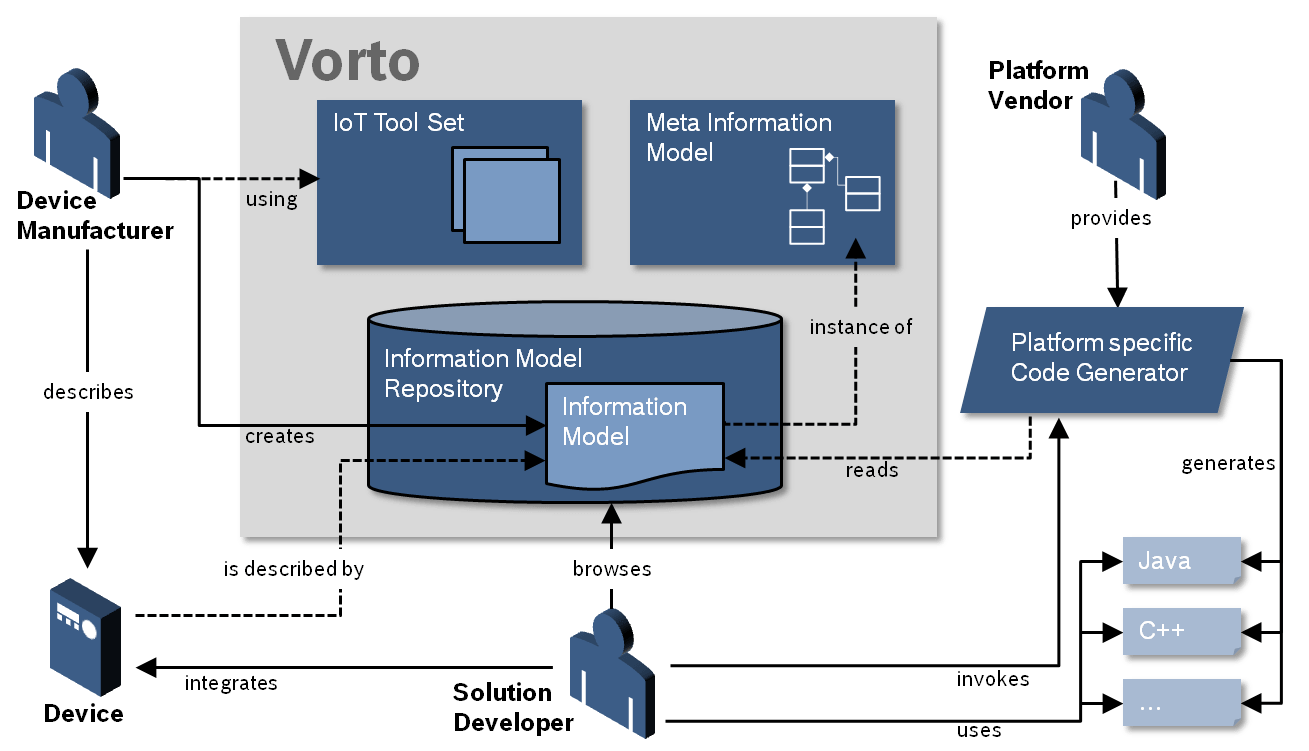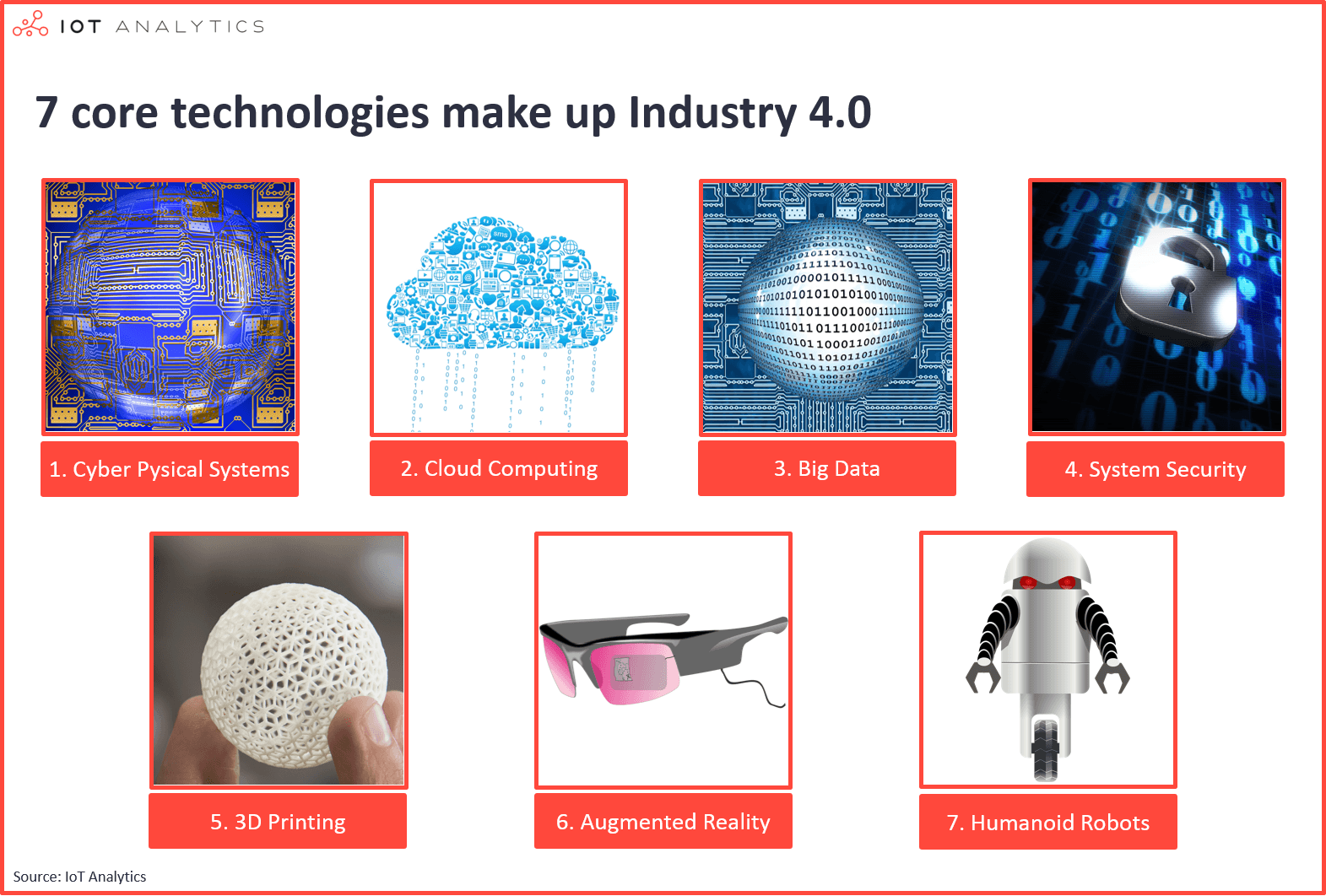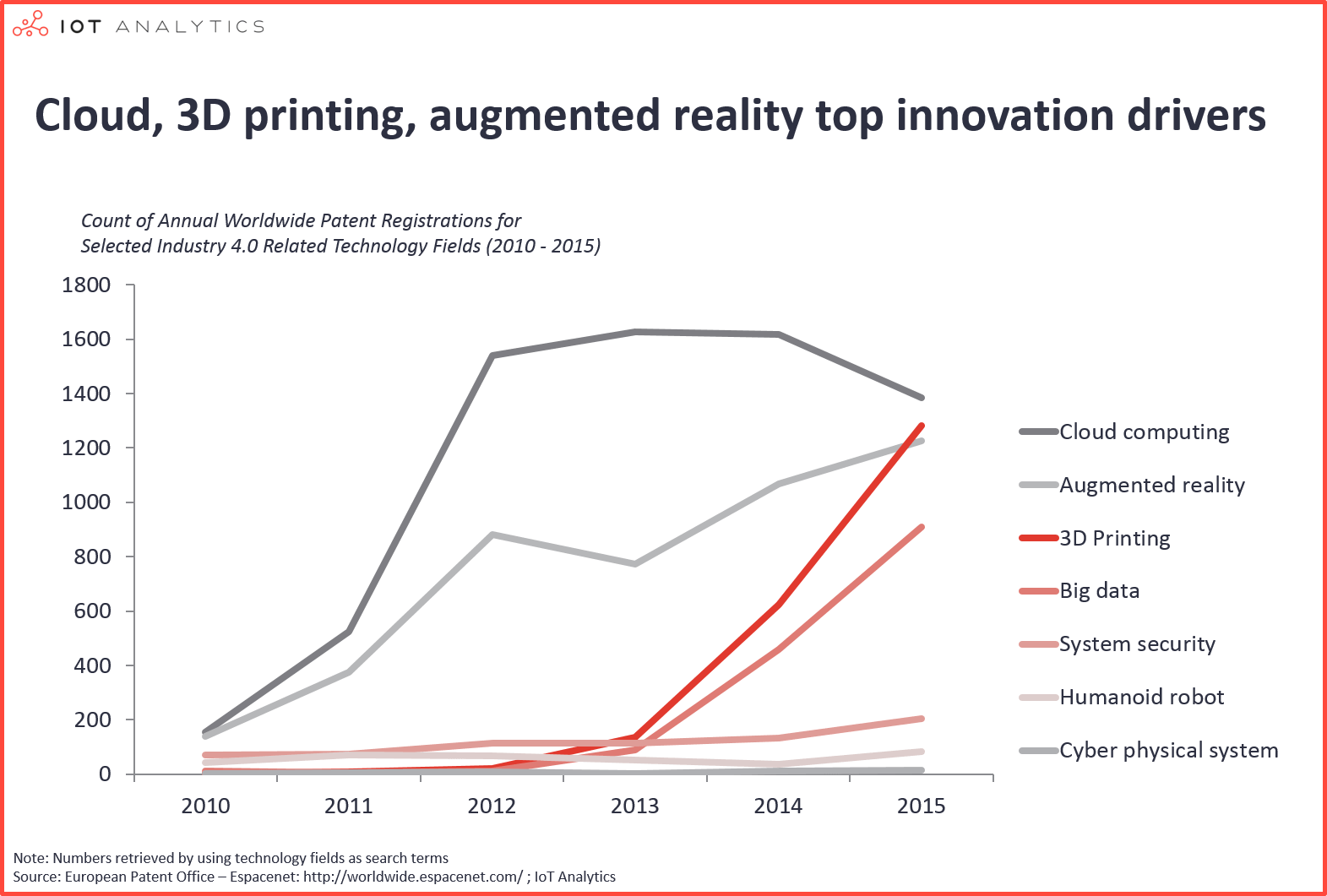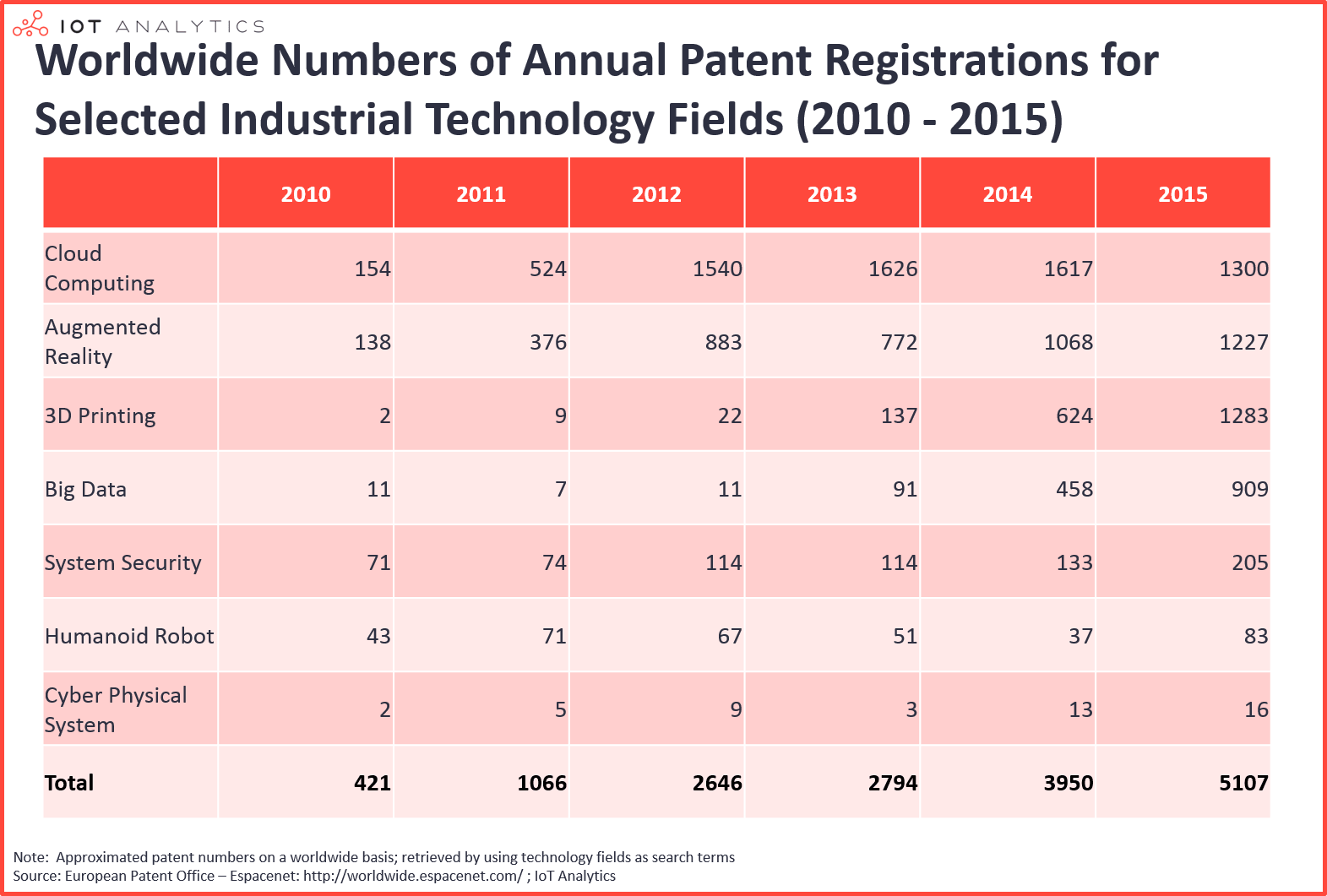In the 1980s IBM had a rock-solid market position in personal computers. Along came a small startup called Microsoft and disrupted the operating system space with DOS and Windows. By the 1990s Microsoft had a dominant position in operating systems. Along came a small startup called Android that offered an operating system for smartphones. Today, Android dominates that space with Microsoft grabbing a mere 3% market share. There are hundreds of similar examples that show how the IT and internet space have produced enormous business model disruptions in only few years.
The manufacturing industry, on the other hand, has been exactly the opposite: It has evolved over the course of the years and it has certainly not seen such major disruptions. The biggest changes in the factory environment since the 1980s have been
- A constantly increasing degree of automation
- The widespread adoption of Lean Manufacturing and Six Sigma principles
- The arrival and integration of enterprise IT systems (ERP, MES, PLM, etc.)
The industrial internet for the first time promises a complete convergence of IT systems and machine automation infrastructure.
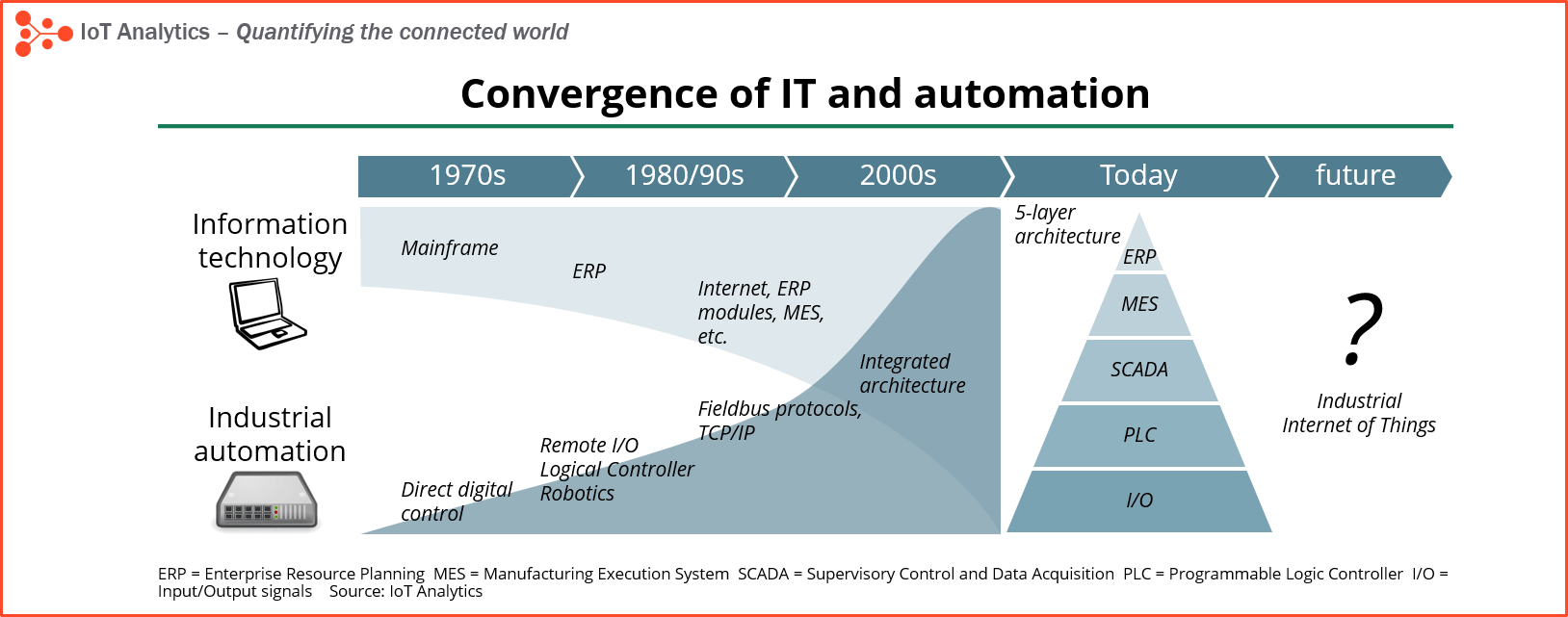 Convergence of IT and industrial automation – click to enlarge
Convergence of IT and industrial automation – click to enlarge
But what looks like just another evolution at first glance is actually the clash of two very different worlds – both aiming to shape the smart factory of the future.
Conservative manufacturing meets fast-paced IT
The slow-moving, conservative manufacturing industry is suddenly blending with the innovative and fast-paced IT industry. The German government calls it the fourth industrial revolution or “Industry 4.0”. Has the time of disruption finally arrived to the factories?
If you ask people working in these industries, the answer is clearly “No”. According to a recent survey undertaken by the World Economic Forum a whopping 88% of industrial decision-makers say that “they still do not fully understand the underlying business models and long-term implications of the industrial internet for their industries” (see report). One has to keep in mind that most of these executives have never witnessed any major disruption in their industry before.
So how much room is there really for disruption in smart factories?
Today’s factories are not efficient
If there is one decisive metric in the manufacturing environment, it is the OEE (Overall Equipment Effectiveness). The metric measures how effectively a manufacturing operation is utilized compared to how effective it could be. Average OEEs run at 60-70%. Today’s world class OEEs are around 85%. That means that even the most effective factories today lose 15% of time on non-value-adding tasks like machine changeovers, stoppages, maintenance, and production of faulty products. The monetary equivalent to a one percentage point increase in OEE is gigantic for every company. Subsequently, there is plenty of room for future smart factories to get closer to a 100% OEE.
But according to Clayton Christensen, Harvard professor and author of the best-selling book “The innovator’s dilemma”, the real enabler for disruption is not the improvement of existing metrics but rather “the emergence of technologies that promise a new set of attributes that some customers value.”
The question then becomes: What new attributes can the Internet of Things bring to the smart factory?
15 stand-alone concepts for the smart factory
We have identified 15 concepts for the smart factory of the future. Not all of them are directly related to the industrial Internet of Things (IIoT). But all of them bring significant changes that make factories smarter:
 15 components of the smart factory of the future – click to enlarge
15 components of the smart factory of the future – click to enlarge
A lot of early-stage projects are being undertaken right now to pilot these smart factory concepts:
- SAP’s predictive maintenance platform (link) and augmented reality on the shopfloor (link)
- Siemens’ intelligent products in the Amberg plant (link)
- Microsoft’s intelligent setup of a Jeep Wrangler plant (link)
There are many more pilot projects. Some of them have the potential to do more than just slowly evolve towards the smart factory. They change the value proposition in the market and generate disruptive scenarios.
4 disruptive scenarios for the smart factory
The following scenarios have the potential to lead to smart factory disruption:
1. Cyber Physical Systems (CPS) change the existing automation hierarchy
Over the last ~30 years a well-defined 5-layer automation architecture has formed. Field devices (e.g., sensors) at the lowest level send data via analog signals to logical controllers. SCADA systems perform (remote) control tasks. Manufacturing Execution Systems allow users to perform complex tasks such as production scheduling. Top-level ERP systems allow for management reporting and share manufacturing data such as order status with other systems (e.g., CRM).
But there might not be a need for 5 layers in the future. The vision is that sensors send data directly to the cloud. Services (e.g., production scheduling) automatically subscribe to necessary data in real-time – this is the vision of cyber physical systems.
 Cyber Physical System based automation – click to enlarge
Cyber Physical System based automation – click to enlarge
Potential winners of this scenario:
- Top-level ERP providers driving the new architecture like SAP, Microsoft
- Bottom-level smart sensor manufacturers like ST Microelectronics, Bosch, or Texas Instruments
- Consumer IT technology providers bringing in similar architectures from the consumer-IT like Microsoft
Potential losers of this scenario:
- Automation players that offer hardware in the middle layers like Siemens, ABB, Schneider Electric
- Software companies offering middle-layer services like Continental Teves or T-Systems
2. Smart maintenance as enabler for Machines-as-a-Service
In the last 10 years, centralized computing and novel software architectures have given rise to a phenomenon called Software-as-a-Service (SaaS). The fact that software can be licensed on a subscription basis (e.g., MS Windows 365) has lead suppliers to generate higher profits and has given consumers more flexibility to subscribe only to the necessary services when needed. With the industrial Internet of Things this model could find its way into the smart factory. But the model doesn’t stop at industrial software packages, it could also be applied to machines themselves. Cloud-based operating data and real-time condition monitoring of machines enables machine manufacturers to be in full control of the operation at all times. This could lead to a smart factory where machine capacity is sold by the hour or even by utilization (much like the “car sharing” services you see in many cities these days).
Potential winners of this scenario:
- Condition monitoring companies like SKF or SPM
- Industrial IoT platforms like PTC or ARM mbed
Potential losers of this scenario:
- n/a
3. End-to-end automated decision-making
The big data analytics wave is in full swing in the consumer world. Take Google Maps as an example. The fact that Google stores people’s favorite destinations, knows the current location, and combines the data with real-time traffic flows leads people to take faster routes to their destination than they used to. In a way Google is facilitating the decision-making for getting to your destination.
This kind of analytics is entering the smart factory. Whether it is finding the best production setup, optimizing the current schedule or improving quality defects: All of these tasks are going to be aided by analytics. Even more so, we will likely see processes become completely automated based on smart algorithms. The path is pretty clear. What remains somewhat unclear is the implementation. Will the computing happen in one central place in the cloud (like for Google) or will we see a rise in distributed edge computing (in which sensor nodes perform the analytics)?
Potential winners of this scenario:
- Analytics providers like IBM or Splunk
- Smart sensor manufacturers like ST Microelectronics, Bosch, or Texas Instruments
Potential losers of this scenario:
- Providers of legacy optimization modules to existing ERP/MES systems
4. “One-piece no-flow” production setup
For many years, the paradigm of manufacturing has been the “one-piece-flow”. One-piece flow allows for maximum transparency, minimum waste, and low inventories. But this may change in the smart factory of the future. The „one-piece“ aspect of manufacturing becomes even more a necessity now that customers demand tailor-made products. But the “flow” aspect, that has been state-of-the-art since Henry Ford invented the assembly line in 1913, may die out. The ability of future manufacturing systems to steer complex operations from the cloud, paired with the arrival of hyper flexible super robots may lead to production setups where each product takes a different but well-controlled route between different work-centers.
Potential winners of this scenario:
- Manufacturers of highly flexible robots and machines
Potential losers of this scenario:
- Specialized machine manufacturers
Conclusion
The pace of innovation in manufacturing is undoubtedly accelerating. While the impact for individual factory workers has not been discussed here (see for example: Will machines replace our white collar jobs?), the opportunities from a business model point of view are exciting. One could even say that the smart factory of the future is suddenly becoming “sexy” with all of this innovation and disruption in the air.
But who will shape the sex-appeal of the smart factory? Big IT-multis like SAP or Microsoft? Some visionary manufacturing automation leaders? Or small startups that aspire to become the Google of the smart factory of the future?
If the last ~40 years of disruption in the IT-space are an indicator of what will happen in the manufacturing world, it will be the latter.




 Industrial job growth in Germany through Industry 4.0 by job type and by industry until 2025 – Source: BCG
Industrial job growth in Germany through Industry 4.0 by job type and by industry until 2025 – Source: BCG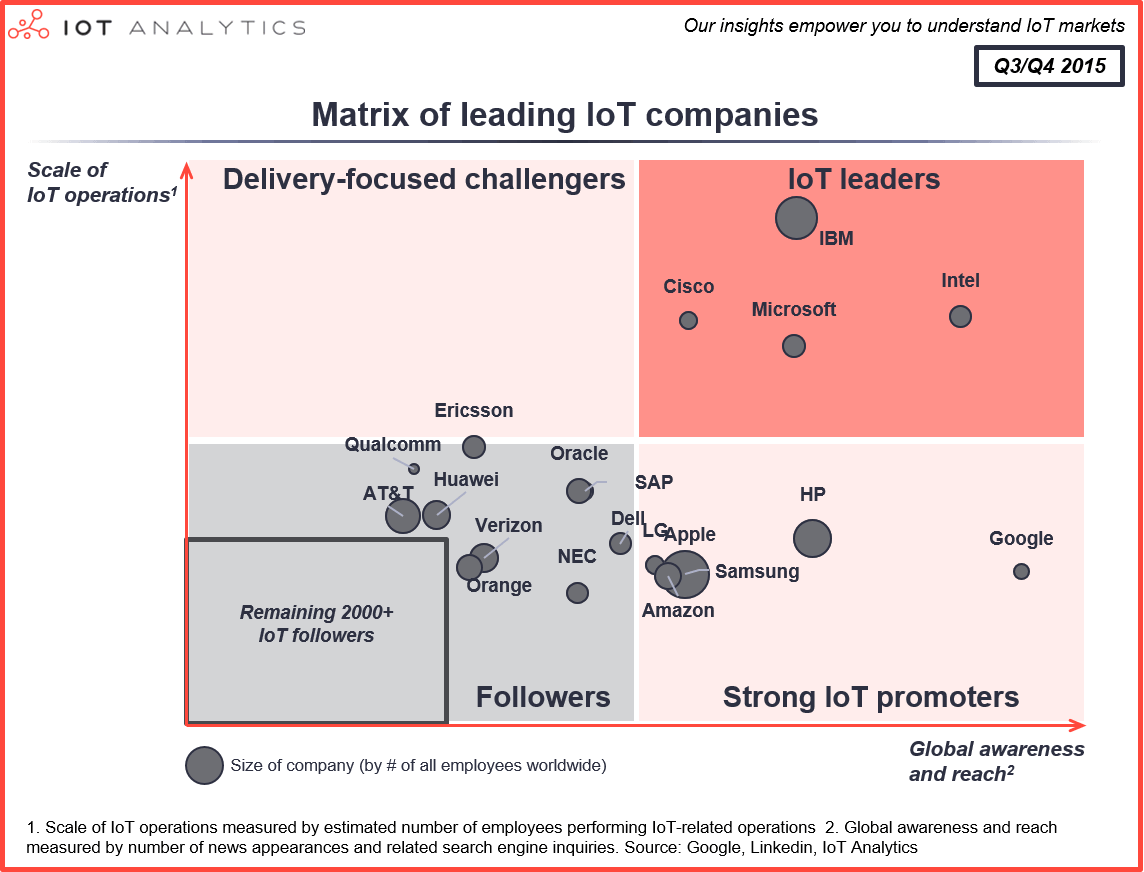
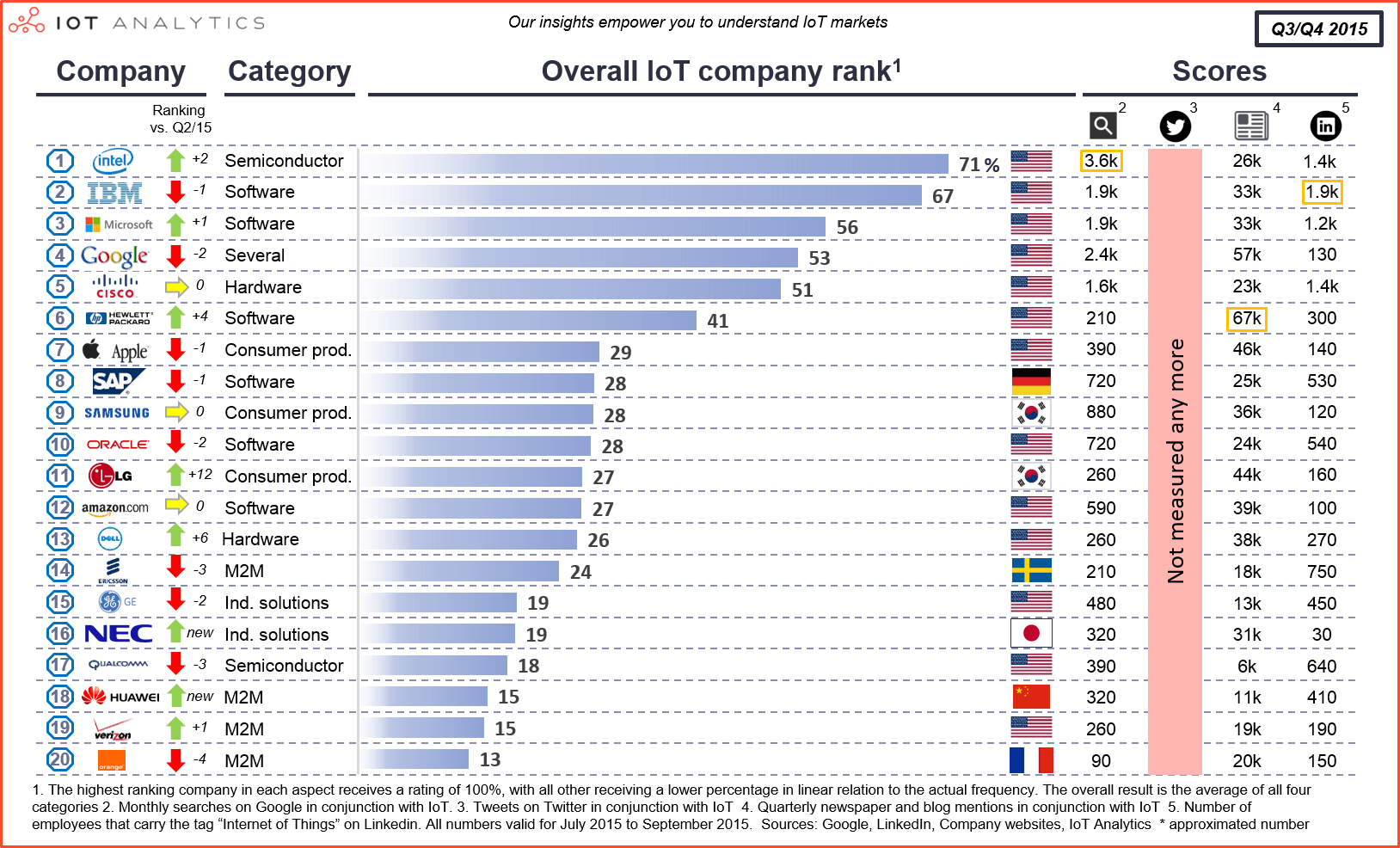
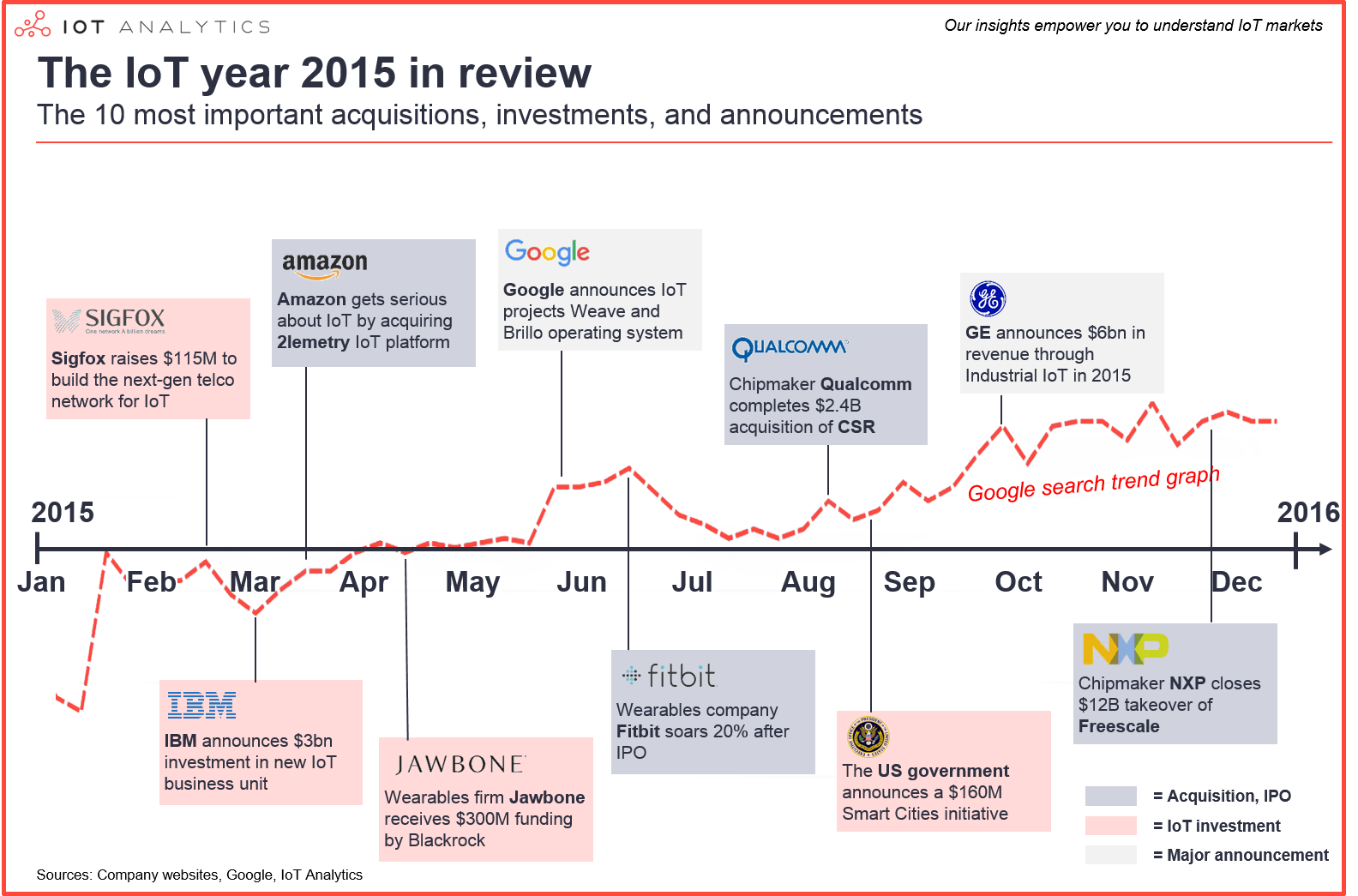
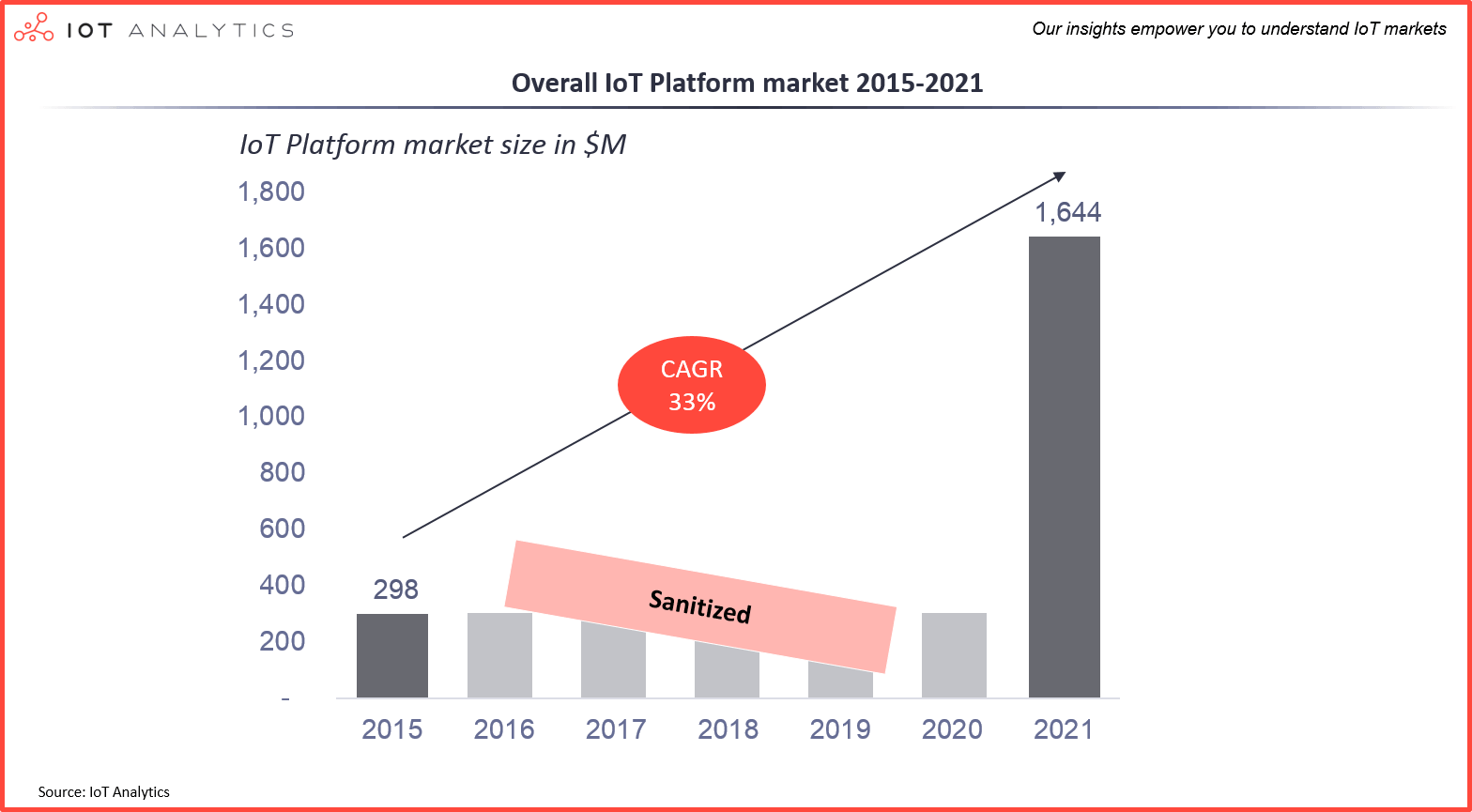
 Commenting on the findings, IoT Analytics Managing Director Knud Lasse Lueth said: “We are currently witnessing an explosion in IoT deployments and solutions around the world. IoT platforms are emerging as the central backbone of these IoT deployments and are the key for the development of scalable IoT applications and services. IoT Platforms represent a truly new market segment that was almost non-existent a few years ago. Despite its tremendous diversity, the $300M market is currently dominated by US vendors with PTC emerging as the market leader at 18% market share. The US is also currently the biggest market for IoT deployments using IoT platforms. However, we are seeing that Asian markets are starting to pick up and do expect Asia to emerge as the biggest continental market by 2021”.
Commenting on the findings, IoT Analytics Managing Director Knud Lasse Lueth said: “We are currently witnessing an explosion in IoT deployments and solutions around the world. IoT platforms are emerging as the central backbone of these IoT deployments and are the key for the development of scalable IoT applications and services. IoT Platforms represent a truly new market segment that was almost non-existent a few years ago. Despite its tremendous diversity, the $300M market is currently dominated by US vendors with PTC emerging as the market leader at 18% market share. The US is also currently the biggest market for IoT deployments using IoT platforms. However, we are seeing that Asian markets are starting to pick up and do expect Asia to emerge as the biggest continental market by 2021”.


